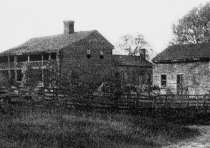
Sturgis’ Union troops initially won the tactical battle but were still forced to withdraw from rich foraging grounds on the French Broad River.
Since the Battle of Dandridge in East Tennessee in mid-January, 1864, Union cavalry had moved to the south side of the French Broad River to claim rich foraging lands there, disrupting Confederate foraging efforts and capturing numerous wagons. On January 25, 1864, Lt. Gen. James Longstreet, commander of the Department of East Tennessee, instructed his subordinates to eject Union cavalry from south of the French Broad. On January 26, Union Brig. Gen. Samuel D. Sturgis, wary of Confederate cavalry, deployed his own mounted troopers to watch area fords. Two Confederate cavalry brigades and artillery advanced from Fair Garden in the afternoon, only to be stopped about four miles from Sevierville. Other Confederates attacked Union cavalry at Fowler’s on Flat Creek, driving it back about two miles before fighting ended for the day. When Union scouts reported a strong Confederate presence on the Fair Garden Road, Sturgis ordered an attack there for the next morning. In a heavy fog, his men attacked and harried Maj. Gen. William T. Martin’s Confederates throughout the day. At about 4 p. m., the federal cavalry charged with sabers drawn and routed the Rebels. Sturgis set out in pursuit the next day, capturing and killing more of the routed and disorganized Rebels. As the Union force reached the French Broad River near Dandridge, they saw three of Longstreet’s infantry brigades crossing the river. Realizing that he was outgunned, Sturgis prudently decided to evacuate the area. Sturgis then tried to attack Brig. Gen. Frank C. Armstrong’s Confederate cavalry division encamped about three or four miles away by the river. Unaware that Armstrong had been reinforced, Sturgis suffered severe casualties in the assault. The battle continued until dark, when the Federals retired from the area. The Federals had initially won the tactical battle, but then lost the foraging grounds when forced to withdraw. There were about 100 Union casualties, and the Confederates lost about 165 men.
Tools
Key Facts
- Confederates drove Union troops back from Flat Creek Union commander Sturgis routed a strong Confederate presence on Fair Garden Road in a heavy fog, but evacuated as 3 of Longstreet’s infantry brigades crossing the river near Dandridge.




